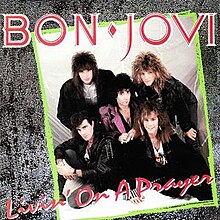 | Diamonds on the Soles of Her ShoesPaul Simon |
Writer(s): Joseph Shabalala, Paul Simon (see lyrics here) Released: February 1987 Peak: 69 AU, 2 DF (Click for codes to charts.) Sales (in millions): -- US, 0.2 UK Airplay/Streaming (in millions): -- radio, 35.3 video, 92.33 streaming |
Awards:Click on award for more details. |
About the Song:Paul Simon and Art Garfunkel established themselves as the premiere folk-rock band in the latter half of the ‘60s, gaining widespread critical acclaim and commercial popularity. They topped the Billboard Hot 100 three times and won a Grammy for Album of the Year for 1970’s Bridge Over Troubled Water. When Simon launched his solo career, he explored multiple genres within his music and continued to find commercial and critical success. In 1975, he released Still Crazy After All These Years, which garnered him another Grammy for Album of the Year and birthed his only solo #1 hit (“50 Ways to Leave Your Lover”). A decade later, it seemed those peak years were behind him. The he visited South Africa in 1985. He was inspired to record Graceland, another Grammy winner for album of the year and one of the top 100 albums of all time, according to Dave’s Music Database. The album spawned a top-40 hit with “You Can Call Me Al” and the title cut won a Grammy for Record of the Year. On a personal note, however, it was the cut “Diamonds on the Soles of Her Shoes” which I considered the highlight of the album – and the best song of his solo career. Simon recorded the song with the South African male choral group Ladysmith Black Mambazo, who sing their parts in Zulu. Cash Box called the song “a sweet ethnic and graceful tune.” WK He met the leader of the group while in South Africa and then flew them to London to record “Homeless,” also on the Graceland album. SF When he performed on Saturday Night Live on May 10, 1986, he brought along some of the musicians he’d performed with in South Africa. SF When the album’s release date was pushed back from spring to August, Simon decided to record another song for the album, saing “Well, we’re all here. We might as well do another track.” SF The result was “Diamonds on the Soles of Her Shoes,” co-written with Joseph Shabalala, the leader of Ladysmith Black Mambazo. SF Simon called it “one of his best musical achievements.” SF Resources:
Related Links:First posted 10/11/2023. |










